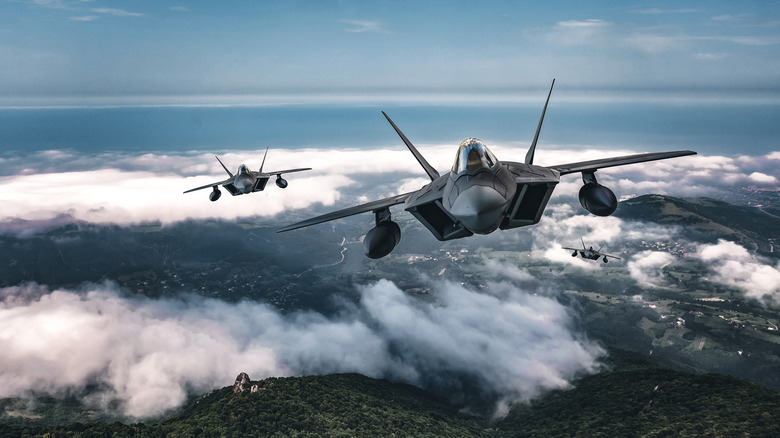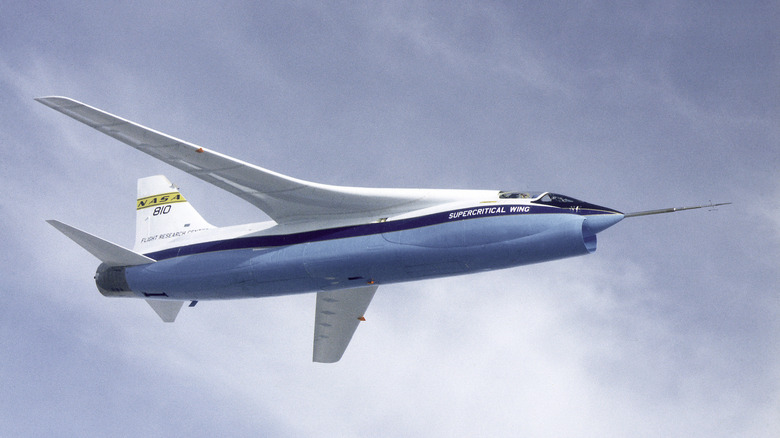NASA Has Its Own Fleet Of Fighter Jets - Here's What They're Used For
When we hear NASA, we automatically associate it with rockets and space exploration. Understandably so, considering news coverage about the agency largely focused on NASA's most groundbreaking missions outside our planet through the years. But NASA also operates high-speed fighter jets here on Earth. The government agency has maintained a fleet of military-style aircraft, like the F-15 Eagle and F/A-18 Hornet, for decades, though we don't mostly hear about these things since everyone's more focused and interested in NASA's otherworldly discoveries.
In 2015, NASA released a video showing one of its pilots refueling an F-15D Eagle mid-air via a KC-135 tanker. While the challenging maneuver highlighted the pilot's skill, the footage gave a peek into the role these fighter jets play in NASA's real-world missions. NASA calls these fighter jets "chase planes." They are fast and agile as they are originally designed for combat use by the U.S. Air Force, Navy, and Marines. However, their swiftness and agility are being used differently by the agency, as these chase planes have been repurposed to fly alongside and monitor NASA's spacecraft and experimental aircraft during test flights.
Considering NASA only repurposes old fighter jets, you can't expect to see some of the most commonly used fighter jets in recent history in its fleet. Its last acquisition was an F/A-18 from the U.S. Navy in 2021, and it has since been repurposed for recording and documenting the flights of NASA's quiet supersonic X-59 experimental aircraft.
NASA's other aircraft and their missions
NASA's atmospheric exploits are not limited to fighter jets, as the agency also operates a diverse range of aircraft for research, science, and logistical purposes. NASA maintains its collection of aircraft at its Johnson Space Center in Houston and other locations, only deploying them when transporting oversized cargo, conducting airborne research, and hosting flight training for astronauts.
A major effort in this division of NASA is its Airborne Science Program, which uses different types of aircraft equipped with specialized instruments and sensors to collect data about the Earth, particularly its atmosphere and different environments, like sea ice and glaciers. NASA has satellites, like the GOES-T, to help with weather forecasts from space. The airborne program does the same by studying the planet's weather and climate variability, among other things, within the atmosphere.
NASA also develops its own experimental planes, which serve as testbeds for new ideas, such as unmanned test missiles or as prototypes of advanced aircraft engineering and technologies. All these projects involving planes and other aircraft prove how NASA is just as active within our planet as it is in space and beyond. In July 2025 alone, the agency carried out two experiments using some of its planes. One of them focused on exploring how the existing cellphone network technology can help support future air traffic systems, while the other scanned the U.S. for potential sources of minerals crucial for the country's economy and security using high-altitude aircraft.

